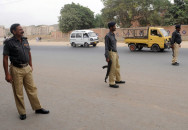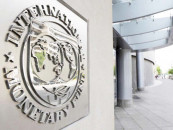History neglected : Restoring Khudabad Mosque, losing heritage
Three-century-old heritage site falls prey to careless restoration by inexperienced contractors

Incautious restoration has time and again resulted in the loss of essence and character of historical sites, as observed in the case of Abdullah Shah Ghazi’s Mausoleum or the temple at Jehangir Kothari Parade. The most recent victim to insensitive restoration is a three-century-old heritage site located some 13 kilometres from Dadu district.
Built by Yar Mohammad Kalhoro in 1718, the Khudabad Mosque has been in the process of restoration for over two decades. However, according to heritage experts, sub-standard restoration by unskilled labour and non-technical experts has resulted in the loss of heritage and has left the mosque a mere remnant of its former glory. “There was once a magnificent fort built around the mosque, which has been destroyed by inexperienced contractors who have pulled its mud to conserve the mosque,” said academic and expert Professor Dr Fatah Daudpoto.
In his book titled Sindh Tiles, British writer and archaeologist Henry Cousins had once expressed his appreciation for the mosque’s architecture, calling its tile-work a world class masterpiece. “Unfortunately, the glorious tiles which once caught the eyes of the British archaeologist have fallen prey to local contractors, who have either destroyed them in the pursuit of restoration or replaced them with local tiles,” Dr Daudpoto said.
Dr Daudpoto, who has a PhD in Arts and Craft, further expressed that the Culture, Tourism and Antiquities Department is not technically equipped to execute the restoration of historic sites. “They are working against the original plan and budget and most of their employees, officers and consultants are either intellectuals and historians or poets who lack the technical knowledge and expertise required for conservation of heritage sites,” he said.
“Contracts have been awarded to favoured persons, who have in turn hired the services of local masons who have damaged the heritage site by their own ill-informed methods. They have no idea how to restore a classic Fresco painting and daily wagers have been tasked to paint the historic mosque for Rs500 per day.”
“Two different PC-I [projects] were devised to restore the mosque to its original shape but work is still underway,” an official from the Culture, Tourism & Antiquities Department, told The Express Tribune on conditions of anonymity. “I don’t have exact figures but more than Rs120 million have been spent so far since 2004,” he added.
Professor Aziz Kingrani, who has worked extensively on heritage sites, said that the Khudabad Fort and Mosque was the nexus of the Kalhora dynasty before Sindh’s capital was shifted to Hyderabad. This is also the site wherefrom emerged the first currency of Sindh, its coins. “The Kalhoras promoted art, architecture, culture, language, music and craft. All this was done from the Khudabad Fort and its mosque, which also played the role of a school.”
According to the erstwhile director of the Department of Culture, Qasim Ali Qasim, the provincial government had taken notice of the counterfeited materials being used in the reconstruction of the mosque some five year ago. However after a brief lull, the contractors continued their work and nothing changed. “They had plastered the walls with local cement rather than using the material needed for the restoration of heritage sites and they did the same for the Kalhora graveyard adjacent to the mosque, where tombs and graves have been crumbling with each passing day.”
Dr Daudpoto suggested registering a case against the contractors and government officials who have been involved in adulterating the architectural heritage of the Khudabad Fort and the adjacent mosque. “I have visited most of the heritage sites of Sindh and can claim that 99 per cent of sites are reshaped or rebuilt with substandard work rather than initiating conservation work. They can’t even differentiate between conservation and preservation and use these projects as cash cows,” he alleged.
Culture, Tourism and Antiquities secretary Akbar Leghari, while speaking to The Express Tribune, refuted the allegations made against the department. “We have directors, deputy directors, curators and conservators who all hold professional degrees. I will visit the mosque in a few days and will look into the development work myself,” he said. “We carefully planned the restoration and allocated funds accordingly. I have no idea who has destroyed the fort and replaced the original tiles with local ones but I will launch an inquiry into the matter,” he added.
Published in The Express Tribune, January 27th, 2020.



















COMMENTS
Comments are moderated and generally will be posted if they are on-topic and not abusive.
For more information, please see our Comments FAQ